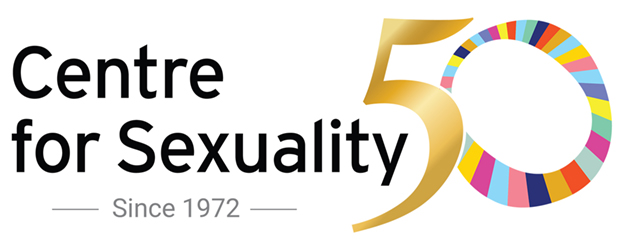“If we want to attend an event or space where we can have fun, then that means we have to show up for each other.”
Being an engaged bystander can help everyone have a safer Stampede.
Every July, the Greatest Outdoor Show on Earth comes to Calgary. In addition to the rodeo, Stampede offers live music, exclusive parties and concerts, pancake breakfasts and arts and cultural experiences. It’s a boot-stomping good time, but as with any event of this size, especially ones that involve alcohol, the risk of sexual assault and harassment increases.
The Calgary Stampede is an event for everyone. To ensure everyone has a great time, we must all share the collective responsibility to look after one another.
“If we want to attend an event or space where we can have fun, then that means we have to show up for each other,” says Dori Palmiere, the Training Centre and Community Engagement Teams Manager at the Centre for Sexuality. “We are responsible for ourselves and others to create safer communities.”
What is an Engaged Bystander?
One way to help ensure you, your friends and those around you enjoy a safe Stampede is to be an engaged bystander. Being an engaged bystander means that when you see a person experiencing harassment or harm, you do something about it. Pay attention to your surroundings. Notice if someone has had too much to drink. Offer some water to someone who has been in the heat too long. Don’t be afraid to be active when you notice someone being harmed.
“In these types of venues, it seems to be an instinct for people to just keep walking, or where they think it’s not really their business,” says Pam Krause, the CEO of the Centre for Sexuality. “If you see something, say something. Then, you’re not just letting it go because that is a fundamental problem in our society.”
Being an Engaged Bystander: Direct, Distract, Delay, Delegate, Document
Speaking up, providing care and extending support invites others to do the same, which ultimately creates healthier communities and safer spaces. To become more aware and active this Stampede, familiarize yourself with the 5Ds of an engaged bystander. You can decide which of the 5 Ds works best for you. For example, some people are comfortable directly intervening while others may prefer to delegate. No matter what intervention you decide, doing something is better than nothing.
Direct
If you are witnessing harm, you can directly intervene. While it’s common to address the person causing the harm, it’s important to check in with the person being harmed first. Asking questions like “Do you need help?” “Are you uncomfortable?” or “What would you like me to do?” can help you assess a situation before taking direct action.
Distract
A simple way to help de-escalate a situation is to distract from it. Consider asking the person to come help you with something, to remove them from the situation, allowing you to ask if they need support or want you to get someone to help them.
Delay
Even if you don’t react immediately, it’s useful to be active after the fact. Checking in with someone who has been harmed is a great way to support them, letting them know you saw what happened and wanted to see how they are doing and if they need anything. If you feel safe to do so, you can also address the person causing the harm to let them know what they did is not okay.
Delegate
The responsibility does not have to fall entirely on you. Make security guards aware of what’s happening, inform people or get some friends to help out, especially if you feel the situation could escalate.
Document
If you feel it’s helpful, you can record the situation. Just make sure to follow up with the person who was being harmed to ask what they want you to do with it. Never post anything online without their consent.
Learn More
Want to keep learning? The Centre for Sexuality offers workshops where you can learn more about the 5Ds and practice applying them to various situations you may encounter. Our workshops help community members build comfort, knowledge and skills to use these tools effectively and become more engaged bystanders. The Centre offers learning opportunities related to sexual harassment in the workplace; safer establishments for festivals, bars and venues; and allyship.
For more information on the training available and how to be an engaged bystander, check out our Training Centre offerings.

